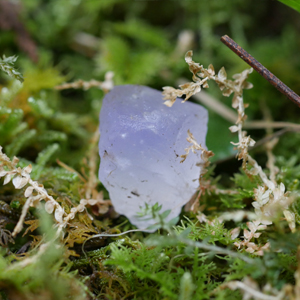Fluorite(hotaruishi)
Fluorite is a mineral that has long been mined in order to make steel.
There are some fluorite stones that emit livid colors when shined with a flashlight.
In Hida-Kanayama, Gero City, there were fluorite mines in the past,
and a large number of Japan’s fluorite was taken from them.
These mines are now no longer used.
There are discovery areas near the remains where you can pick up stones.
Not only will you find small stones, but you may find large stones as well.
Fluorite hunting Would you like to give it a try?
Sasahora Fluorite Mine
Deer Street Fluorite Mine.
From around the year 1940 or 1941, there were a few manganese mines over a tract of land in this area, and there was a company that excavated those mines, Sasahora Mine.
The people who worked there who were in charge of mining development discovered veins of fluorite within Sasahora Deer Street (Kadoori).
The mining concession of the fluorite mine was sold to Matsushita Mining, and they started actually mining the fluorite from 1955.
The mined fluorite was mainly shipped to Daido Steel (currently “Daido Special Metals”) in Kasugai City, Aichi Prefecture, and to Osaka, for use as a catalyst in steelmaking.
At the beginning of mining, the veins ran in parallel, and the width of these veins at the time was about that of a tatami mat (Japanese straw mat). Compared to the fluorite in the mine that can currently be picked up, it is said that the fluorite used to be a deep shade of green.
Miners searched for underground veins by excavating pits above the area where the parallel veins ended, but excavating upward resulted in cave-ins, so the miners started to search for veins deeper into the ground.
It is said that a few pits were excavated, but miners searched for veins by digging approximately 90 meters deep into the main pit, installing an elevator, and then creating a large cavern in the lower area, and then from there, tunnels. It is also said that a dump ran through the excavated area.
The mining method that was used in the early period of mining was to excavate the fluorite by chiseling a hole into the rock and then putting a diamond in that hole, and then repeating that process about four more times. Then, squibs were attached to the areas and were then detonated in order to shatter the bedrock.
In the latter period, mining was performed by using air-type machine drills in holes that were chiseled open.
In 1971, the veins became very thin, and there wasn’t much fluorite that could be collected from them, so Matsushita Mining transferred the mining concession to one of its clients, Hayashi Gunpowder (Mitakecho). Hayashi Gunpowder also performed mining for a little while, but, as expected, there wasn’t much fluorite for them to excavate, so they suspended mining. Sasahora Mine has been abandoned ever since.
Matsushita Mining continues to operate and import fluorite in Kasugai City, where its headquarters are located.
Fluorite
Hardness 4 CaF2 Calcium fluoride halogenated compound
Fluorite is a mineral that had long been mined as a fusing agent for steel. However, in recent years, the sludge containing fluorine that is discharged when making steel is toxic, so this mineral is no longer used for that purpose because this toxicity is difficult to treat.
Currently, this mineral is processed for lenses and is used in instruments requiring an extremely high level of precision. Some of us probably have heard that it is used in single-lens cameras.
Even now, it is currently widely used as a raw material of fluorine, which is used as fluorine resin in items common in our everyday lives, such as in coating materials and in Freon gas.
This mineral glows when heated to a high temperature, and some samples of fluorite glow under ultraviolet light. Therefore, the word “fluorescence” was not inspired by the glow of a firefly, but by the glow of fluorite.
Because of the shape of its crystals and the colorful appearance, it is a mineral that is also very popular as a mineral sample.

